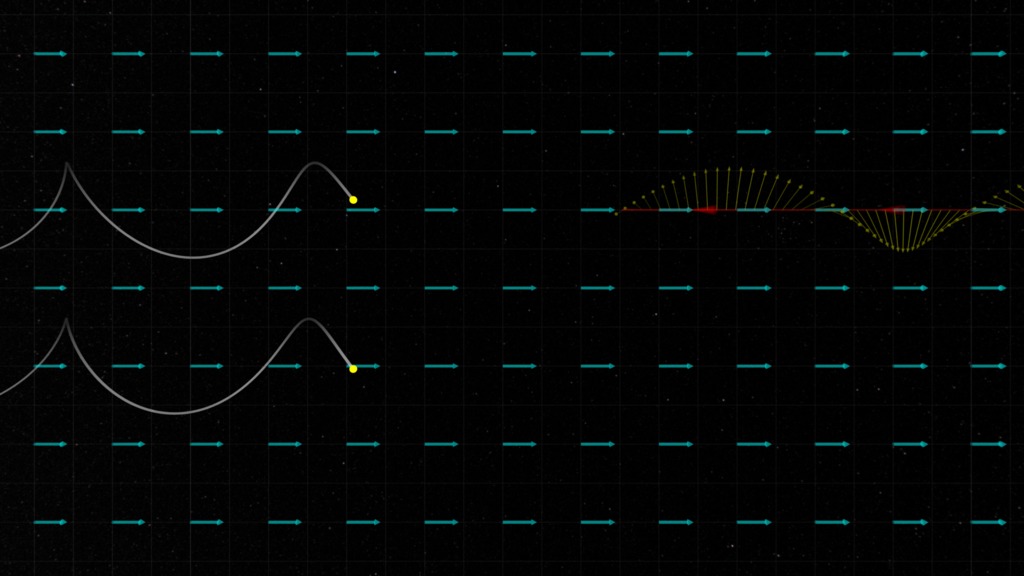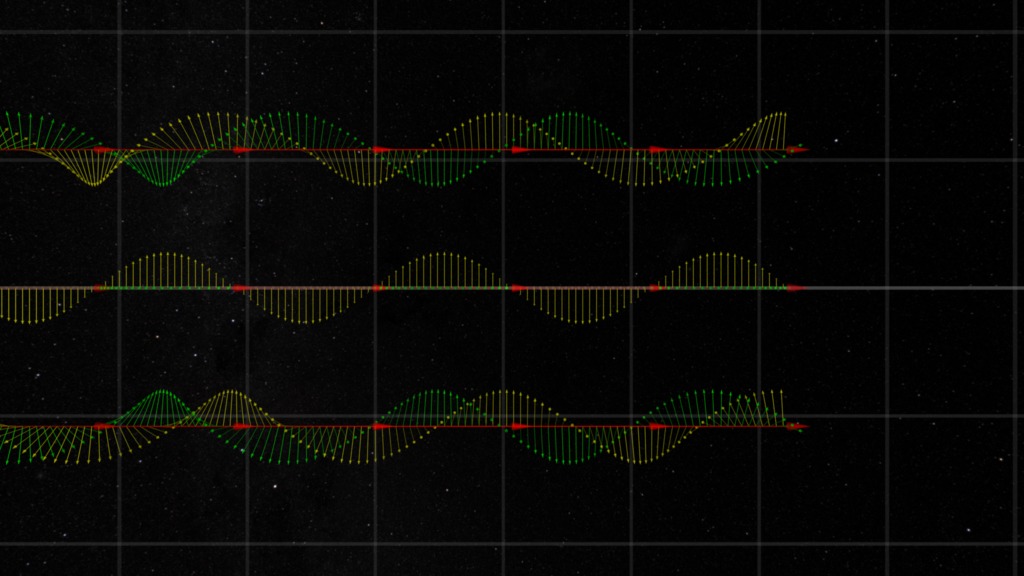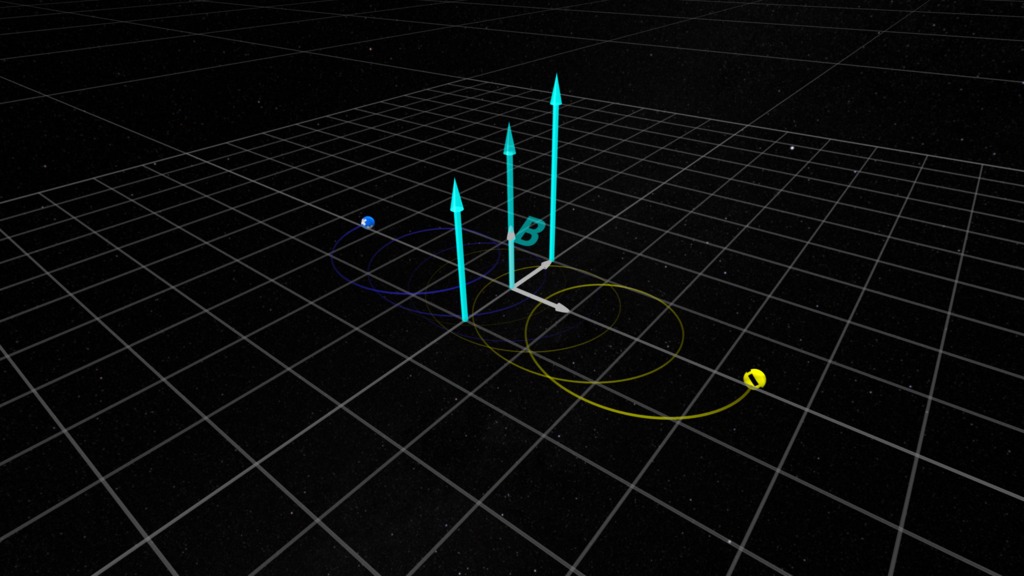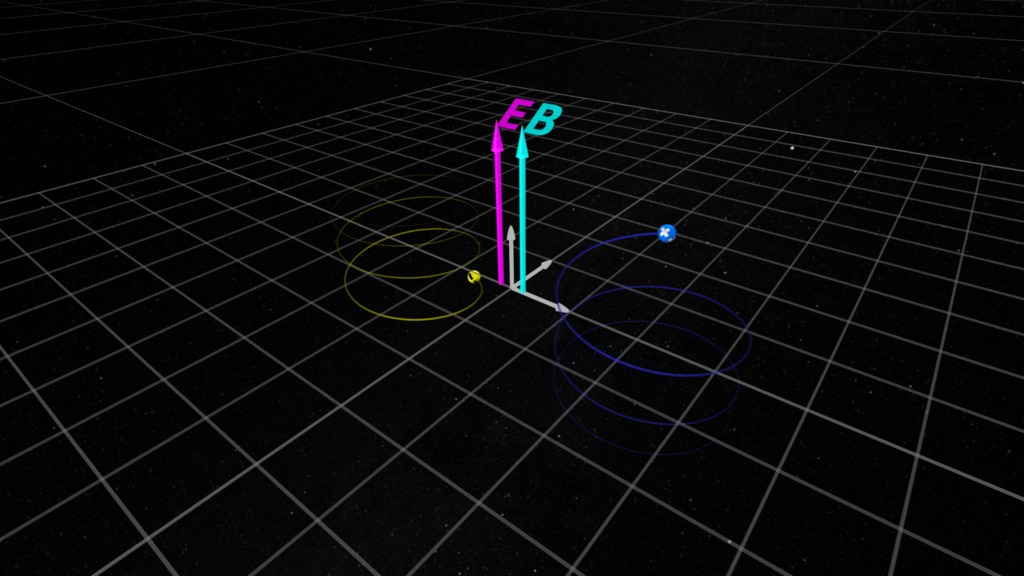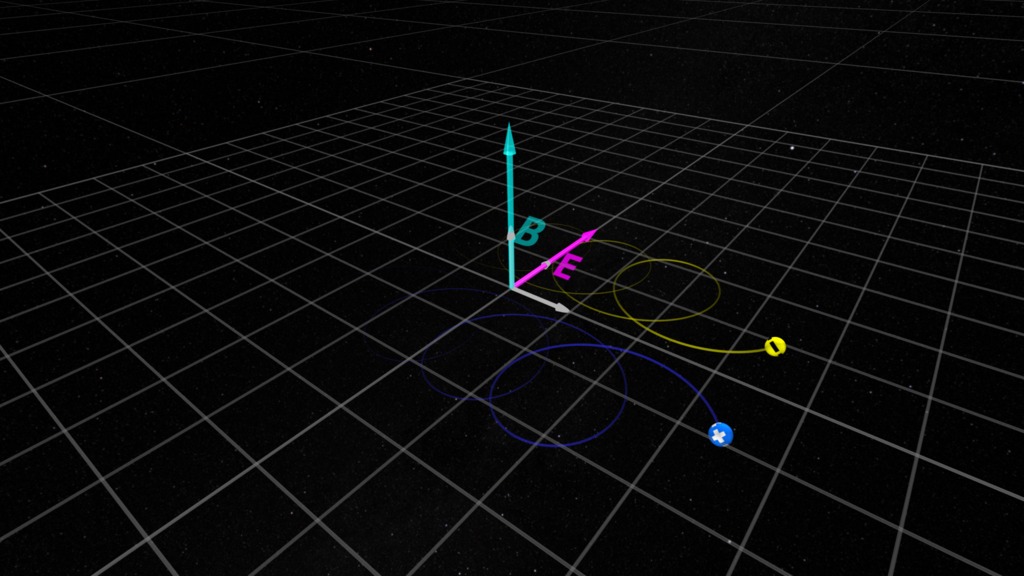Plasma Zoo: Gyromotion in Two Dimensions
Visualization from two camera positions of simple 2-dimensional gyro-motion of charged particles in a magnetic field.
Motions of charged particles in electromagnetic fields are important in understanding the behaviors of plasmas in space. In Plasma Zoo, we present visualizations of particle motions in simple electromagnetic field configurations.
Consider a magnetic field which fills a region of space with uniform intensity and direction. Here we represent that magnetic field (designated with the letter 'B') as a cyan (light green) arrow, its direction representing the direction of the field vector.
One of the more fundamental motions of charged particles in a magnetic field is gyro-motion, or cyclotron motion.
If a charged particle is moving in a magnetic field, the particle experiences a force perpendicular to the direction of the charge motion and the field. This direction is determined by the Right-Hand Rule (Wikipedia). In the simplest case, this curves the particle path into a circle. The direction of the force also depends on the charge of the particle, with negative particles (labelled '-') being directed in circles in a sense opposite to positive particles (labelled '+'). If we view along the direction the magnetic field is pointing, we will see that the positive particles gyrate anti-clockwise while the negative particles gyrate clockwise.
In this visualization, we have two charged particles, with the same mass and speed, one positive and one negative, moving in a plane. The magnetic field is uniform and directed perpendicular to the plane.
Under these conditions, we see that the two charged particles, starting out in the same direction, have their trajectories bent into circles and traverse the circular path in opposite directions.
Important Note: The example here shows particles with the same speed and mass. If the masses are different (for example, a positive proton has about 1836 times more mass than an electron), the radius of the gyromotion will be proportionally larger for the same speed.
Credits
Please give credit for this item to:
NASA's Scientific Visualization Studio
-
Animator
- Tom Bridgman (Global Science and Technology, Inc.)
-
Project support
- Laurence Schuler (ADNET Systems, Inc.)
- Ian Jones (ADNET Systems, Inc.)
-
Scientists
- David G. Sibeck (NASA/GSFC)
- Thomas Moore (NASA/GSFC)
Release date
This page was originally published on Monday, February 2, 2015.
This page was last updated on Wednesday, May 3, 2023 at 1:50 PM EDT.
Series
This page can be found in the following series:Datasets used
-
ParticleSimulator
ID: 846
Note: While we identify the data sets used on this page, we do not store any further details, nor the data sets themselves on our site.
